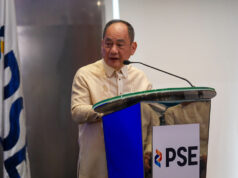Gov’t, consortium at an impasse over NAIA project
By Arjay L. Balinbin, Reporter
THE P102.12-billion Ninoy Aquino International Airport (NAIA) rehabilitation project appears to be on the rocks, as the government is unlikely to accept changes proposed by the “super consortium” composed of some of the country’s largest companies.
The so-called “NAIA super consortium” released a statement on Tuesday saying the “far-reaching and long-lasting consequences of the coronavirus pandemic on airline travel, airline operations and airport passenger traffic necessitated a review of the assumptions and plans to ensure that the NAIA project will be viable in the new normal.”
The consortium said it had submitted changes to update the NAIA rehabilitation project’s framework to ensure its bankability.
“Unfortunately, the government indicated that it is not willing to accept most of the consortium’s proposed options and the consortium can only move forward with the NAIA project under the options it had proposed,” it said.
The consortium is composed of Aboitiz InfraCapital, Inc; AC Infrastructure Holdings Corp.; Alliance Global Group, Inc.; Asia’s Emerging Dragon Corp.; Filinvest Development Corp.; and JG Summit Holdings, Inc.
The group said it submitted a letter to the National Economic and Development Authority (NEDA) on July 6, saying they can only move forward with the NAIA project under the options that it had proposed.
“The consortium remains committed to support the government’s pursuit to implement its strategic infrastructure projects through public-private partnership to jumpstart the recovery of the economy, including the building of an international gateway that will reflect the growing and modernizing economy of the country,” the consortium said, without providing details of its proposed changes.
The coronavirus pandemic has wreaked havoc on the tourism industry worldwide, as international travel has been mostly suspended and domestic tourism affected by quarantine measures.
A recent study by the United Nations Conference on Trade and Development (UNCTAD) showed global tourism revenues are expected to decline by up to $3.3 trillion due to the pandemic.
Ruben S. Reinoso, Jr., Transportation undersecretary for planning and project development, said in a phone interview he was unaware of the proposed changes by the consortium.
“I don’t know. Hindi naman sila sa amin nakikipag-communicate. Na-approve na ng NEDA Board ’yan eh. Now, if they want to change that, wala kaming official communication to that effect. But I understand they are sending communications to NEDA,” Mr. Reinoso said.
He said the negotiation period between the consortium and MIAA had ended.
“Natapos na ’yung period of negotiation, na-stall na because ayaw nila ’yung terms and conditions na inapprove ng NEDA Board, and they want to change it,” he said.
Mr. Reinoso has said there was an 80-day negotiation period after the NEDA Board’s approval of the project in November last year.
BusinessWorld reached out to NEDA officials but they declined to comment.
In February, Mr. Reinoso said the government and NAIA consortium would have to renegotiate certain parts of the draft concession agreement. These include the plan to lay off airport workers, the use of a bus rapid transit (BRT) system to transport passengers within the airport complex and real property tax payments.
Mr. Reinoso said the consortium had suggested that the Manila International Airport Authority (MIAA), which is the primary grantor, shoulder part of the tax payments.
Metro Pacific Investments Corp. was originally part of the consortium, but it withdrew from the project in March due in part to the unresolved issue of tax payments.
The rehabilitation of the NAIA, whose main terminal opened in 1981, is expected to increase its capacity to 47 million passengers a year in the first two years and further expand this to 65 million passengers after four years.
The NAIA, which has four terminals, has been operating beyond its 30.5 million annual passenger capacity. It recorded 45.3 million passengers in 2018.



